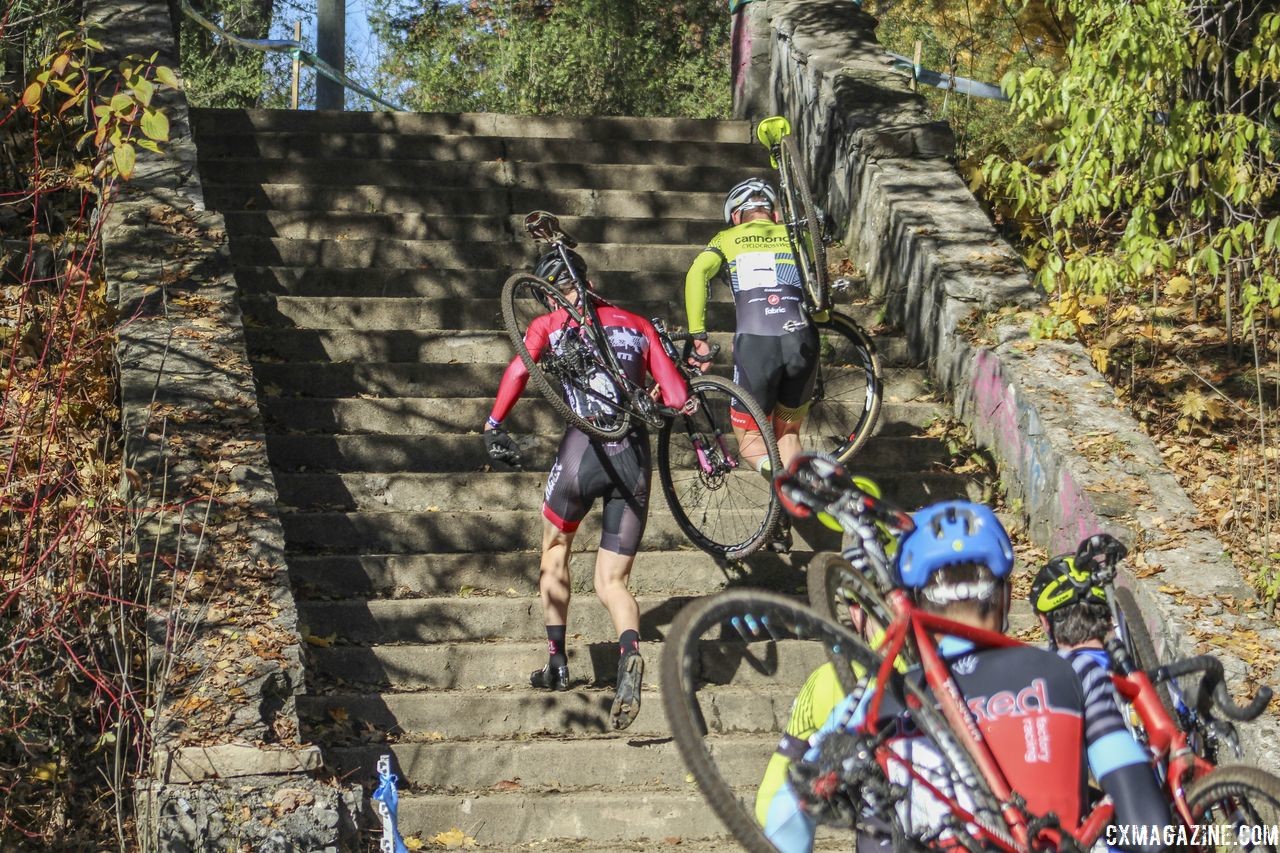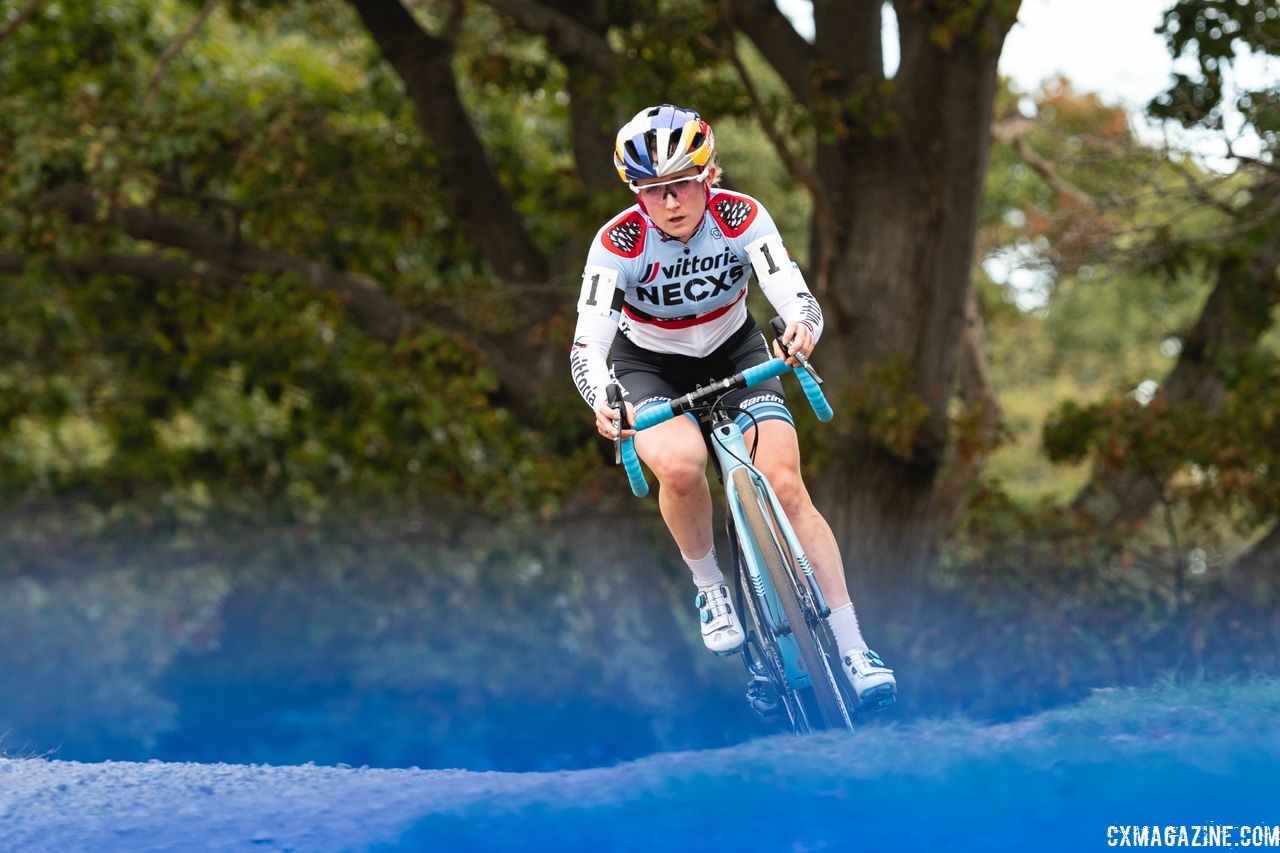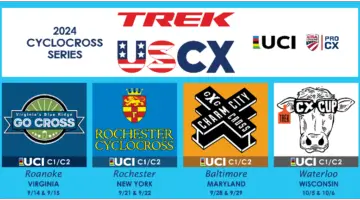The UCI Management Committee held its most recent meeting in September alongside the Road World Championships in Innsbruck. During that meeting, the Committee published the rules for organizing 2019/20 cyclocross events (Pages 41-43 of the document).
The changes were made with little fanfare, and although they are available on the UCI website, most race directors here in the U.S. first learned of the changes in an email sent to them this month.
You can read the full email here.
The biggest change that could have wide-reaching effects on U.S. cyclocross is a change in how UCI C1 requirements with respect to international races are enforced.
Other topics covered by the changes include Junior Men races, U23 Men races, UCI-recognized series and the UCI point scale. Another rule put in place in June might also affect the scheduling of U.S. Nationals.
Today, we take a look at the new UCI rules and how they might affect cyclocross here in the U.S. We also reached out to race directors from several U.S. UCI C1 races and USA Cycling to get their thoughts on how the changes will affect the 2019 domestic season.
UCI C1 International Rider Requirements
With the exception of the 2017 US Cup-CX series, U.S. cyclocross has been without a national series since the USGP folded following the 2012 season. As Kerry Werner pointed out in our recent interview with him, C1 races serve as the de facto U.S. cyclocross series that draws North America’s best riders to race against one another.
The Rules
In addition to a separate payout structure for C1 races versus C2s, the UCI also has a rule regarding the makeup of C1 fields. The current rules (Rule 5.1.004, Page 4) state:
An event will only be given class 1 status if the previous season’s race had at least 10 foreign starters, representing at least 5 different nationalities.
This rule, however, has not been enforced with respect to U.S. UCI races, as the country has hosted a robust calendar of C1 races with fields largely composed of North American racers.
The new rules from the UCI state:
Promotion
An event can only do a request of an upgrade to class 1 if the previous season’s race had at least 10 foreign starters, representing at least 5 different nationalities (total cumulated for Men Elite, Men U23 and Women races) (Article 5.1.004). The UCI will then evaluate the possibility of an upgrade.
Relegation
A class 1 event which would not respect the above mentioned in 2018-2019 will automatically get the class 2 status for the 2019-2020 season. Exception for the events which were class 1 in the 2017-2018 season and received the organization of the National Championships in 2018-2019. (Emphasis theirs)
Potential Impacts
We did a quick tally of U.S. UCI C1s held so far this year and how Ruts n’ Guts did in 2017 and found only two of the races meet the rules the UCI says it is going to start enforcing. Additionally, since Louisville hosted Pan-Ams in 2017 and Nationals this year and was formerly a C1 weekend, it may have a shot at meeting the rules.
2017/2018 U.S. UCI C1 Races
| Race | Nationalities | Foreigners |
|---|---|---|
| Rochester (2018) | 4 | 18 |
| Jingle Cross (2018) | 9 | 39 |
| Charm City (2018) | 2 | 4 |
| Cincinnati (2018) | 7 | 11 |
| Ruts 'n Guts (2017) | 3 | 5 |
The UCI’s decision to enforce the 10/5 rule could have wide-reaching effects on U.S. cyclocross.
Having only a few UCI C1s—as opposed to the six held this year—will likely further dilute an already spread-out North American UCI calendar. The C1s have traditionally brought the best riders to one place, giving fans a chance to see the best racing against the best.
Fewer C1 points in the U.S. would also affect call-ups for riders who choose to race in Europe, and it could lower country rankings for the U.S. and Canada, potentially impacting the number of riders from each country who are able to race Worlds.

Thanks to the World Cup, Jingle Cross meets the 10/5 international rider requirement for next year. 2018 Jingle Cross Day 3, Sunday. © J. Corcoran / Cyclocross Magazine
Race Directors’ Thoughts
Given the potential impact of the 10/5 rule enforcement, we reached out to several C1 race directors to ask their thoughts.
All of them were surprised about the new rule enforcement. “The 5 nationalities / 10 foreign riders is not a change in rules, it just seems that the UCI has decided to become strict in their enforcement of that rule,” Rochester Cyclocross race director Scott Page said. “So that is what is surprising to us.”
Julie Herrmann, the Cincinnati Cyclocross race director, provided some insight into the motivation for the change. “I am not terribly surprised as it was clearly an issue for Europeans that racers in the U.S. could hit up all the C1s and come to Worlds with a front-row call-up without ever having traveled internationally to do so. In all fairness, this is clearly an easier requirement to meet when the size of your country is the same size as some of our smaller states.”

Werner beat Hecht by a few tire treads. 2018 Cincinnati Cyclocross Day 2. © B. Buckley / Cyclocross Magazine
Even though they do not meet the strict requirements of the 10/5 rule, both Page and Charm City Cross race director Kris Auer said they will be applying for C1 status in 2019.
Herrmann said Cincinnati will do the same. “Given the new regulations, I believe that it is actually our responsibility to make sure that we get that designation on behalf of U.S. cyclocross racers.”
With races required to have 10 international racers from five countries, the importance of U.S.-based foreign racers comes to mind. Katerina Nash (Czech Republic), Sofia Gomez Villafane (Argentina), Caroline Mani (France) and Maria Larkin (Ireland) could become popular people. Perhaps they can pass around a hat to fellow racers and promoters to ensure they take the start at an event?
The early-season races also seem to attract foreigners for extended stays. Matthieu Boulo (France), Yorben Van Tichelt (Belgium), Kim Hurst (New Zealand) and Garry Millburn (Australia) have all spent extended time in the U.S. in recent years. Getting these riders to future races could also be a way of meeting the requirements.

Katerina Nash is one of several international riders who live and race in the U.S. 2018 Jingle Cross Day 3. © D. Mable / Cyclocross Magazine
Auer identified one of the challenges in attracting foreign riders to the U.S. “There is really only one way to guarantee those racers and it’s something few if any of us have,” he said. “Money can buy the riders, but I shudder to think about what that cost would mean. It’s not that we wouldn’t pay it, it is however highly unlikely we would be able to.”
Page shed some light on how much money would be required. “One idea is to potentially team up with some of the other UCI promoters to collectively work together in bringing in foreign racers,” he said. “As expected, it can be insanely expensive. Case in point is a very prominent Belgian team contacted us last year to have their team race at our event and their price was $40,000 dollars plus travel and lodging.”
Another challenge of attracting international riders is that there are several UCI races in several different countries on any given weekend.
“During our weekend this year, we were one of five UCI C1 events around the world, including a Superprestige race,” Herrman said. “I am not sure that we are going to be able to attract racers from across the Atlantic without a significant infusion of capital, but what we can do is do our best to make sure that all the racers who tend to race in the U.S. come to our event.”
We contacted Chuck Hodge of USA Cycling about the change in rules. He commented, “We are currently communicating with the UCI on several regulation changes and how they relate to our Federation.”
The UCI Cyclocross Committee meets this week, and USA Cycling has passed concerns along to its members ahead of the meeting.
We will continue to monitor this story and its effects on the U.S. UCI schedule in 2019. The new UCI race schedule is typically released a few days before the World Championships.
Hello, UCI Junior Men
The new rules state:
It is mandatory to organize a UCI Men Junior race at every event registered on the UCI Cyclo-cross international calendar. There is no minimum number of different riders’ nations requested in this category Men Junior.
The article 5.1.048 bis, obliging organizers to have only one race at the time on the course, will NOT apply to the Men Junior category.
This year, North America offered 10 UCI races and the Continental Championships for Juniors. Six were in the U.S. at the US Open of Cyclocross, Cincinnati and the Major Taylor Cross Cup. The five in Canada were Pan-Ams, Sherbrooke CX, the Silver Goose CX and PTBO Lift Lock Cross.

The number of UCI races available to Junior Men will increase significantly next year. 2018 Pan-American Cyclocross Championships, Midland, Ontario. © Z. Schuster / Cyclocross Magazine
With 45 total UCI races (including Pan-Ams) in North America this year, the number of Junior UCI races will increase fourfold under the new rules if all these events return for 2019/2020.
Although the Junior Women category was added for the 2020 World Championships and UCI World Cups in 2020/21, there is no rule mandating Junior Women races be held.
Since UCI points are considered under USA Cycling’s Worlds selection criteria—and for call-ups at Nationals—it is fair to speculate that the new rules will favor Junior riders who live in regions such as the Northeast and OVCX with several UCI races as well as those families with travel budgets.
Said Hodge about the changes for Juniors, “We will work with the Cyclocross Committee and our athletics staff on this after Nationals this year.”
Bye Bye, UCI U23 Men
The new UCI rules state:
Separate races for Men U23 won’t be authorized anymore during UCI Cyclo-cross events, except for the following events:
– The UCI recognised Series
– The National Championships
– The Continental Championships
– The UCI Cyclo-cross World Cups
– The UCI Cyclo-cross World Championships
For every other event of the UCI Cyclo-cross calendar, the Men Elite and Men Under 23 will race together, only one result will be established.
Last year, the now-discontinued CX MoVal hosted a U23 race for men. There were no separate U23 races on the North American calendar this year that will be affected by the new rule.
UCI-Recognized Series
The new rule states:
A written request must be done to the UCI for the organisation of a ‘’Series’’ as per Article 1.2.026 of the UCI regulation. Furthermore, the following obligations must be respected:
-The Series must be organised or approved by their National Federation
-A Cyclo-cross Series can count a maximum of eight rounds
-A maximum of two Series by National Federation will be accepted
The first three riders at least of the Overall Standings for Men Elite and Women must receive a prize money. This prize must be equal for the two categories Men Elite and Women.
Right now, the U.S. has two UCI-recognized series in the Vittoria Northeast Cyclocross Series and the Parkway CX Trophy series. The two-series limit would apply if race directors sought to organize a third series in the U.S.

The Vittoria Series is one of two UCI-recognized series in the U.S. 2018 Gran Prix of Gloucester Day 2. © Peter Pellizzi
UCI Points Scale Changes
The last UCI rule change pertains to UCI points:
A new points scale will be introduced for the 2019-2020 Cyclo-cross season, with more points awarded to Men Elite and Women in CC, CN and C1 events. The new scale will be published in June 2019.
More points for C1 races will diminish the importance of UCI C2 events. This change has the potential to further complicate the effects of the 10/5 rule if it is strictly enforced with U.S. races.
National Championships: Back to January?
In the section on national championships, article 1.2.029 of the UCI regulations states:
The national cyclo-cross championships shall be run on a date set by the Management Committee.
When the updated UCI rules were released in June, a new provision in article 5.2.015 elaborated on national championship scheduling:
As set out in article 1.2.029, national cyclo-cross championships shall be run on the mandatory date fixed annually by the UCI management committee. The UCI may grant dispensations for the southern hemisphere or in cases of force majeure.
Concerning the calculation of the UCI rankings, all national championships run before or after the mandatory date shall be considered as being run on the mandatory date.
With Louisville and Tacoma, USA Cycling has planned two December Nationals, moving the event back to before the holidays, when it was held before it was pushed back to January starting in 2011. USA Cycling cited member feedback as one reason for the move.
Hodge said USA Cycling has received permission to hold next season’s Tacoma National Championships in December 2019, and USA Cycling will continue to assess the feasibility of December Nats when future events are awarded.
Given the U.S. received exemptions for Louisville and Tacoma, it seems like that if USA Cycling chooses to continue hosting December Nationals, the UCI will allow it to happen.
All Rule Changes
We will continue to follow these new rule changes and how they affect U.S. professional cyclocross in the coming years.
You can read all the 2019/20 rule changes below:
2019-22020 UCI Cyclocross Regulation Modifications



























